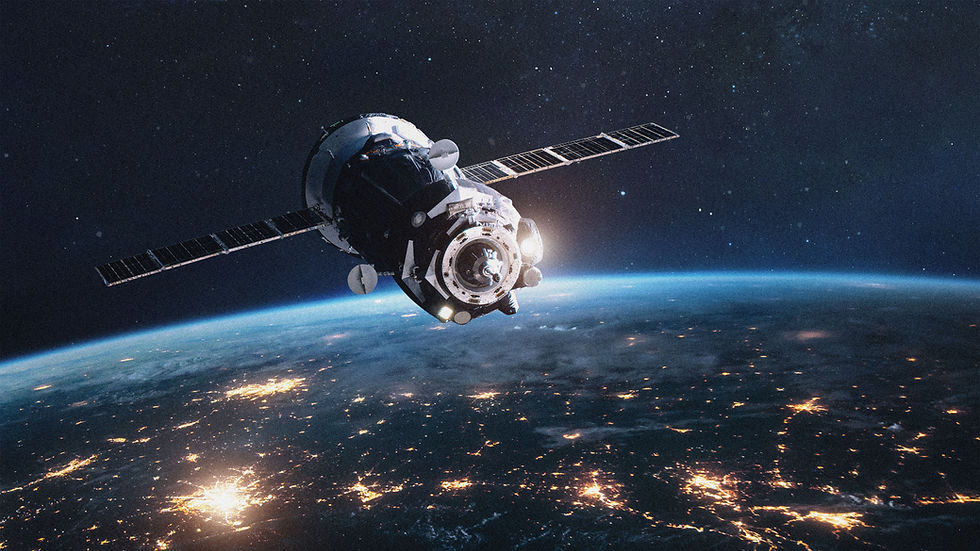A Short Tour of Engineering: From Mechanical to Aerospace
- Amanda Grodman

- Apr 5, 2023
- 3 min read
Updated: Jun 2, 2023
Being an engineer is no easy feat, especially when dealing with space. Some may assume that engineering is an invariable field that may not provide hands-on opportunities within the aerospace or aeronautics realm, or that being an engineer requires a continuous production of complex innovations. In actuality, the engineering field is rather broad and is currently demanding young and skilled thinkers, programmers, and creators to design and implement up-and-coming technologies. Often, the most complex problems require simple yet technical solutions that are beyond the titles engineers are often deemed. Engineering can be divided into several sectors that are fundamental in the spacecraft design process, from initial designs to final flight, and can be seen within a variety of work environments. Ultimately, being an engineer can offer large opportunities for even the youngest of students–especially when it comes to astronautics.

Common types of engineering include mechanical, civil, and electrical, each of which having subtypes that may overlap when it comes to aerospace. Mechanical engineers tend to work with the design and composition of projects, while electrical engineers monitor and effectuate circuitry arrangements. However, keeping in mind that these titles may overlap in innovative ways is notable; certainly, the largest space-oriented projects and problems could not have been tackled without the work of several fields. Below is a chart of the most common types of engineering–and their historical relation to space.
Engineering TItle | Description | Relation to Space |
Aerospace (aeronautical and astronautical) | Spacecraft design, testing, implementation | Directly hands-on in spacecraft design and incorporation |
Computational | Use of data analysis and programming for spacecraft | Coding for CubeSats, other machinery, analyzing data |
Electrical | Electrical and circuitry testing/design | Connection between space and Earth via configured instruments |
Mechanical | Machine design | Designing spacecraft from a technical perspective |
Aerospace engineering is defined by the designing, testing, and flying of spacecraft, from rovers to rockets. This definition is as multifaceted as the field, meaning that those who choose to pursue aerospace engineering may do more of the designing (mechanical), while others are in charge of programming and hard-wiring (computational and electrical), and possibly even flying themselves (possibly a combination of those mentioned). The first manned flights, the first man on the moon, and the recent Artemis launches could not have been possible without aerospace engineers, who have served in multiple facets (including design, testing, and implementation) for decades. On a contemporary scale, tackling paramount issues in space and beyond–between maintaining a balanced yet sustainable food source, designing housing for potential colonies, and approaching space debris concerns–requires new and novel engineers for the task. Engineering's designing and construction component also leaves room for those interested in art and robotics, primarily in the initial stages of space flight. Given their diverse roles, the engineers mentioned above ultimately come together in constructing the next lunar rovers, assembling and coding vital CubeSats, and processing code from custom-designed machinery. Truly, the space industry has a place for everyone–especially for those who don’t mind wearing several “helmets”.

In this episode of “Let’s Go to Space: BLUESKY Learning,” Episode 96: Controlling Space with John Inness, we speak with John Inness, a guidance, navigation, and control engineer at Marshall Space Flight Center. He studied at North Carolina State University for aerospace engineering and soon transitioned to an internship where he achieved his current position. Mr. Inness has tremendous experiences in the SLS, HLS, Solar Cruiser, SVGS, and similar projects, and provides great insight into current events orbiting aerospace engineering today. Mr. Inness epitomizes the interdisciplinary nature of aerospace engineering–with several unique hobbies he shares with us in addition to his current work. Learn more about John Inness or visit our other weekly podcasts to hear from other speakers, by clicking the link above. Also make sure to check out our website to learn more about becoming a member of the Aerospace and Innovation Academy, where you can join us in our quest to go to space.




Comments